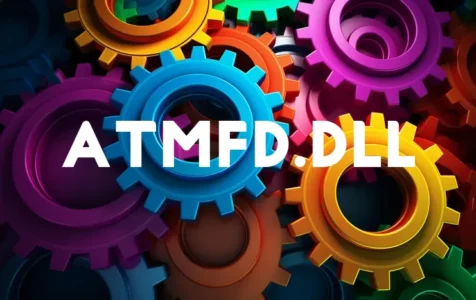Understanding ATMFD.DLL
ATMFD.DLL, which stands for Adobe Type Manager Font Driver, is a dynamic link library (DLL) file used by Windows operating systems to render OpenType and Type 1 fonts. This DLL is particularly important because it enables the system to display the fonts correctly when users are working with documents or applications that require such typefaces.
Safety and Security Concerns
Typically, a DLL file like ATMFD.DLL is safe to run, as it is a legitimate component developed by Adobe Systems and utilized by Microsoft Windows. However, there have been instances where vulnerabilities within this DLL have been identified. For example, Microsoft disclosed two remote code execution (RCE) vulnerabilities within the Adobe Type Manager Library (ATMFD.DLL). This means attackers could potentially exploit these vulnerabilities to run malicious code on a user’s system and gain control to install programs, change or delete data, or create new accounts with full user rights.
These security issues were considered significant due to Windows’ widespread usage, and Microsoft deemed the vulnerabilities important enough to warrant issuing security updates. Versions of Windows affected included Windows 7 and other versions, with attacks being more targeted towards Windows 7. Users were urged to update their systems with provided security patches to mitigate these risks.
Common Issues and Their Resolutions
Issues associated with ATMFD.DLL can emerge from several situations, such as a faulty application, deletion or misplacement of the DLL file, corruptions by malware, or a damaged Windows registry. Some of these problems might manifest as error messages during program startups, system boot, or while trying to use specific functions within a program.
Expert Tip: For smoother PC performance, consider using a PC optimization tool. It handles junk files, incorrect settings, and harmful apps. Make sure it's right for your system, and always check the EULA and Privacy Policy.
Special offer. About Outbyte, uninstall instructions, EULA, Privacy Policy.
To fix issues related to the ATMFD.DLL file:
1. Update your Windows to the latest version, which will likely include the security patches for known vulnerabilities.
2. If a specific program requires ATMFD.DLL, try reinstalling the program to restore the DLL file in its installation folder.
3. Run a full system scan for malware using your antivirus software to ensure that the system is not infected.
4. Use the System File Checker (SFC) tool to repair missing or corrupted system files (including ATMFD.DLL). Open the Command Prompt as an administrator and type `sfc /scannow`, then press Enter.
5. In cases where you might need to manually download a fresh copy of the DLL, proceed with caution and only from reputable sources to avoid introducing malware onto your system.
Unfortunately, we are unable to direct you to an authoritative community discussion on ATMFD.DLL, but you would typically find a variety of user experiences and advice regarding handling DLL files in such forums.
User Community Experiences
Users have gone through various experiences while trying to resolve issues with ATMFD.DLL. In some cases, renaming the file or tweaking certain settings in the system’s registry was necessary. These measures were often recommended in light of specific vulnerabilities and should be done with caution. Moreover, these activities sometimes led to unintended consequences, like losing access to certain functionalities or impacting network devices. These stories emphasize the importance of following detailed instructions and understanding the implications of system-level changes.
Final Remarks
When dealing with sensitive system files like ATMFD.DLL, it is crucial to stay informed about the latest security vulnerabilities and updates from trusted sources such as Microsoft. As for any actions that involve changing system settings or files, they should be handled with care, and preferably by individuals who are familiar with Windows operating systems, to avoid compromising system integrity and functionality.
